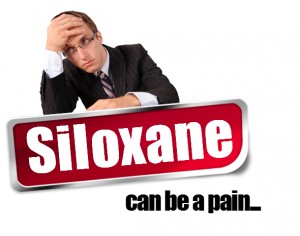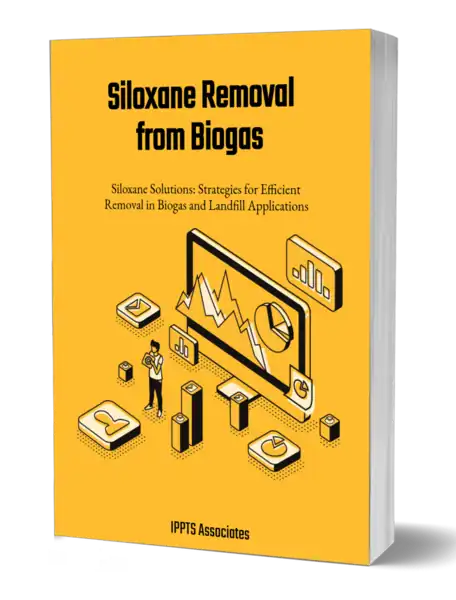Siloxane and Landfill Gas: The elimination of VOCs and siloxanes is an important aspect of the LFG conditioning process for any vehicle fuel or pipeline injection project. Engines, turbines, and compressors can be damaged by even trace concentrations of siloxanes, thus they must be eliminated.
VOCs are a contaminant that would be sufficiently eliminated in an engine or turbine, but their molecular structure is comparable to that of siloxanes. This means that any medium designed to remove siloxanes will also trap VOCs; in most cases, one cannot be removed without the other.
Landfill gas (biogas) released from landfills contains small quantities of siloxane. It can also be found in biogas from sewage treatment plants. Because siloxanes are prevalent in many cosmetic, health, and beauty goods, our findings suggest that siloxane contamination is also a potential issue with WRRF biogas.
 A siloxane is any chemical compound composed of elements of the form R2SiO, where R is a hydrogen atom or a hydrocarbon group. They belong to a wide class of compounds known as organo silicon compounds – or just “silicon” to most people.
A siloxane is any chemical compound composed of elements of the form R2SiO, where R is a hydrogen atom or a hydrocarbon group. They belong to a wide class of compounds known as organo silicon compounds – or just “silicon” to most people.
Siloxane was the cause of many landfill gas engine failures when in the late 1970s landfill gas engines were first introduced, and until the problem was identified. Nowadays it should not be a problem. The manufacturers and plant maintainers have developed strategies for the avoidance of build-up in engines and turbines by treating the biogas before it enters the gas engine, or turbine, and this prevents damage to the plant.
In internal combustion engines, siloxanes are oxidised to silicon dioxide which then forms deposits on pistons and cylinder heads which are extremely abrasive and cause damage to the internal components of the engine.
The concentration of siloxanes in biogas varies greatly depending on the source type and location. According to a 2017 report from the California Biogas Collaborative, siloxane concentrations in raw biogas range from 0 to 400 milligrammes per cubic metre (mg/m3) for WRRFs, 0 to 50 mg/m3 for landfills, and 0 to 0.2 mg/m3 for livestock farms (no results available for stand-alone MSW digesters).
In bad examples of siloxane contamination the landfill gas power generation engines can require a complete overhaul at 5,000 h or less of operation.
Silicon dioxide accumulates on the heated surfaces in combustion equipment, especially in the cylinders, on the valves and on the heads of IC generator engines.
Other websites quote an example of an IC generator engine running on 400 SCFM of biogas containing just 1 ppmv of siloxane D5, for example, which is said to have generated approximately 59 kg or 130 lb. of silicon dioxide per year.
New for 2025! Our Comprehensive Ebook:
 For a much more in-depth report on all aspect of the Siloxane solutions check out our comprehensive ebook below and:
For a much more in-depth report on all aspect of the Siloxane solutions check out our comprehensive ebook below and:
- Unlock actionable strategies, cost-saving techniques, and real-world case studies for effective siloxane removal in your biogas and EfW projects.
- Gain expert insights that boost efficiency, extend equipment life, and minimize maintenance costs.
Due to the fact that this is a solid, some of this silicon dioxide will remain in the engine and if not removed can cause considerable damage that increases the cost of operating the generation equipment.
If there are also elements such as sodium, aluminium, magnesium, iron, or similar elements present then glass-like materials called silicates can form. It is these silicates that are extremely abrasive to generator engine moving parts.
There are at least five different removal methods for siloxane which have been applied to varying extents to the removal of siloxane before a biogas like landfill gas is combusted.
Siloxane contaminants are in theory removed by passing the biogas through a bed containing activated alumina, which absorbs the siloxanes. The alumina eventually reaches saturation.
When the activated alumina becomes saturated with siloxanes, the absorption capability of the activated alumina can be recovered by passing a regeneration gas through the bed of activated alumina, however, it would be necessary to obtain specialist advice before doing this.
Further sources of information on siloxane removal from landfill gas are the specialist landfill gas engine and turbine equipment, manufacturers.
We have further information on trace components in landfill gas here.
Reference: California Biomass Collaborative. January 2017. Renewable Energy Resource, Technology, and Economic Assessments. Appendix H—Task 8: Comparative Assessment of Technology Options for Biogas Clean-Up. CEC-500- 2017-007-APH. https://cwec.ucdavis.edu/wp-content/uploads/03-16-2017-CEC-500-2017-007.pdf.
[Article originally published in November 2012. Updated July 2021.]
Methods of Siloxane Removal from Biogas
There are at least 5 methods of siloxane removal from biogas which have been used. This remarkable range of methods is described below. First, we will define what siloxane is and explain why it needs to be removed: Siloxane removal from biogas is imperative to guarantee a consistent performance of frequently used machinery. Machinery like […]





